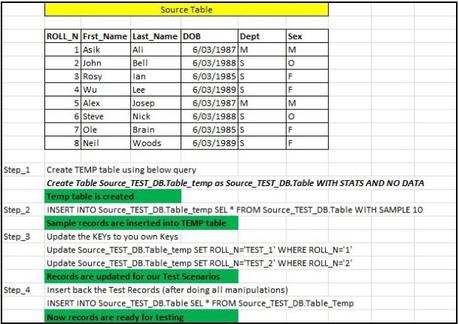Hi All,
Thanks for viewing my blog so far ! I wanted to keep sharing my knowledge as much as I can – Happy Reading

In this blog I am going to explain about Test Data. In other testing practices you don’t need predefined test data, as we are the user who updated the values either in the Front End applications or some other applications. But in Data warehouse we are the ones who are completely depend on our Upstream (front end application) applications. We will test what all are the data that used in the Upstream guys.

We testers are the intermediate guys who buys the data from one team and validate , transform and sell it to other guys


Let me explain you in normal terms, you are doing a business , you need to buy the goods from your buyer and sell to u r customer!
What all you need to do?
- Need to buy quality products
- Need to check the count what you ordered
- Need to check the specification what you asked for?
- Need their support in fixing the issues
- if they cant fix it, then you need to repair it and sell it to your customer
Now come to our Business Intelligence scenarios,
As a tester what you need to do with the data ?
- Check the quality of the data (is as per the specifications)
- Check the count is correct using Trailer records (refer my Source Data validation Blog)
- Check if the data is not as per requirement then ask upstream guys (the people who gave the data to you) to fix the data issues
- Check you have got all the data that you required, if not ask your upstream to provide more data, suppose if the deny, please manufacture your data

As I said already in my earlier blogs we have below types of DWH testing
1. Loads from file to staging tables to IM tables
2. Loads from table to staging tables to IM tables
3. DIMN/FACT projects
4. Extract projects
5. Reports
Test Data fabricating for Staging table to Target tables are quite easy, but for Extract Testing and Reports testing are bit difficult

For most of the positive scenarios Upstream will provide the data for us !! but we tester wants to break the code so we will have few negative scenarios for which we will not get data from upstream. And for the scenarios which will happen once in a while we will not get the data so we need to create the data.
For Extracts, the Teradata SQL codes will be written by joining more than 10 tables , each tables will have its own WHERE clauses. After extracting the records using the SQL , you found that few scenarios are missing then you need to set up a data that needs to flow across all the tables.( Will be explained in my Know about Extracts Blog)
As I said in my Test Environment blog about the access, the testers should have Create table access in Test Environment and Select access to View Data Base.
So using Create Table access we can create our own test data as follows:
Please read the image very carefully, if you don’t understand please send me an EmailTo : [email protected]

1 Create a TEMP table in you test Environment using Create Table Qry.
2. Insert sample records into your TEMP tables using INSERT INTO Qry.
3. Modify the data as per your requirement
4.Insert back the modified data into your actual table.
5.Your test data is ready to use

Hope you guys understood the test data manufacturing technique . If you guys need more support please comment in this blog

Thanks -
Happy Reading
Asik
Filed under: Uncategorized Tagged: Access, Business intelligence, Create Tables, Data warehouse, ETL Testing, Extracts, Insert, Staging tables, Test data, Views



